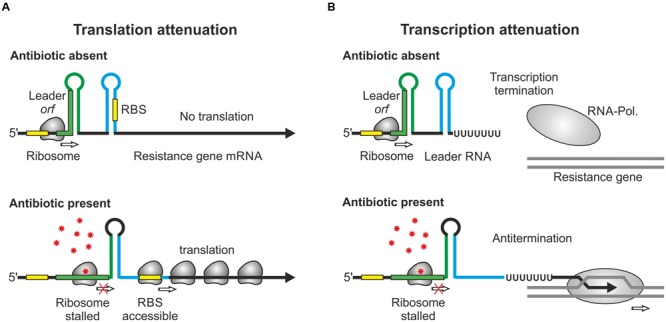FIGURE 1.

Regulation of antibiotic resistance genes by RNA attenuation. (A) Regulation by translational attenuation. The resistance gene ermC encodes a short orf in the leader region. When the leader orf is translated, the mRNA folds into a secondary structure, which represses translation of the resistance gene by sequestration of the RBS (top). Presence of the cognate antibiotic stalls the ribosome in the leader orf. This triggers formation of an alternative structure allowing ribosomes to access the RBS and to translate the resistance gene (bottom). (B) Regulation by transcriptional attenuation. In the case of ermK and similar attenuators (Table 1), translation of the leader orf causes the RNA-polymerase to terminate at an intrinsic terminator. Antibiotic-induced ribosome stalling in this orf favors formation of an antiterminator structure allowing RNA-polymerase to continue transcription beyond the terminator.
